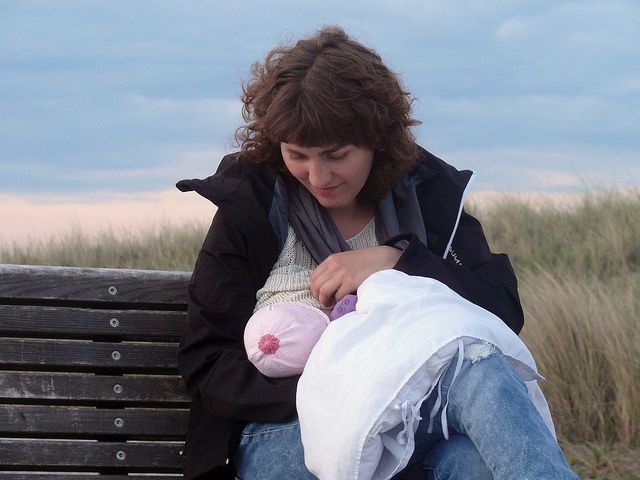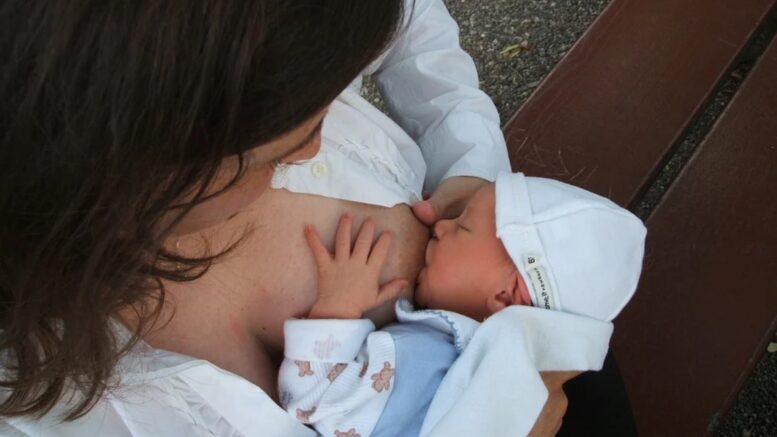While breastfeeding, many women experience itchy nipples. It could be a sign of a minor infection or simply a symptom of the body adjusting to breastfeeding.
Breasts and nipples are frequently itchy while breastfeeding. Besides the fact that they are constantly being pulled and sucked, they also get wet several times per day. Furthermore, the continued increase of breast tissue can all result in dry, irritated skin. However, itchy nipples that are accompanied by pain may be an indication of thrush, an infection that has to be treated by a doctor.
An infection can affect the breast just like it can affect the vagina. For itching relief in the vagina, there are special creams that can relieve the burn. For the best itching cream for private parts, opt for natural ointments without chemicals, since they’re healthier to apply down there.
Below are some causes of an itchy breast and tips to prevent it.
What Causes Breast Itching in Breastfeeding Mothers?
Your breasts may become itchy during lactation for a variety of reasons. Here are some examples.
Mastitis
Mastitis is an infection that causes soreness and inflammation in the deep breast tissue. It can appear unexpectedly, often during the first few weeks of breastfeeding. Bacteria can get into the milk ducts via a cracked or pierced nipple. This infects the milk ducts and fatty tissue, resulting in breast infection.
Mastitis can cause itching and pain on the skin as well as deep within the breast tissue. Some women report having painful shooting sensations. When felt, your breasts may feel warm. Mastitis can also cause a rise in temperature.
Other symptoms you may notice in addition to itchiness are;
- Difficulty squeezing out milk
- High fever
- Flu-like symptoms that do not resolve with ibuprofen.
Mastitis can be treated with antibiotics prescribed by a doctor. In rare cases, an untreated infection can spread and even become fatal.
Thrush
Thrush is a yeast infection that affects the nipples. Candida is the scientific name for yeast, which is a type of fungus. Candida is generally painless and can be found in many different parts of the body.
However, the fungus can multiply and lead to infection in moist areas of the body, such as those around the nipple. Thrush is a prevalent trigger of itchy breasts and nipples in nursing mothers.
Yeast mainly affects the nipple and areola region, both of which are moist. Nipple itchiness is followed by a tingling pain. Or a pins-and-needles sensation, especially after breastfeeding. A throbbing pain deep in the breast tissue is also possible.
The baby’s tongue may have a layer or coating of white material in some cases of thrush. At the same time, babies can develop a yeast infection in the diaper area. Because yeast enters the baby’s stool, it can cause a diaper rash.
You could have contracted the infection from the baby. Or you may have unknowingly transmitted the disease by passing on vaginal yeast infection during vaginal delivery.
This is why it’s important to treat the vaginal infection before delivery. Treating infections prevents infecting the baby during birth. Even a slight vaginal itching should be taken seriously. However, before using any vaginal itch cream, consult your medical personnel.

Contact Dermatitis
Contact dermatitis is characterized by pain and itching following contact with a skin irritant. In the early weeks of breastfeeding, some women develop nipple contact dermatitis as their bodies adapt to constant touch with a baby’s mouth.
A few creams that several women use to help with breastfeeding can often cause contact dermatitis. Contact dermatitis causes itching only on the part of the nipple that comes into contact with the baby’s mouth or another irritant. The nipples can become red or scaly at times.
Stretch Marks
During lactation, your breasts fill with milk. This can cause the skin around them to rapidly expand and form itchy stretch marks.
Fine pink lines will be visible on the breasts.
In addition, the skin stretches, becoming dry and irritable. Moisturizing the skin aids in the treatment of the condition.
The Let-down Reflex
The let-down reflex aids the supply of milk from the nipple. The let-down reflex can be triggered by suckling, listening to your crying baby, or even thoughts about the baby.
This reflex is also experienced by some women when a feed is overdue or when they have an excess of breast milk.
The let-down reflex affects every woman differently. But it can cause brief itching in the nipples or breasts. Itching that lasts for long minutes or hours is most likely not caused by the let-down reflex.
Tips to Prevent Itchy Breasts
- After each feed, clean your breasts with a soft cloth dampened with warm water. It aids in the removal of the baby’s saliva. Babies’ saliva can irritate the skin if left on for an extended period of time. It’s also a great way to keep your nipples and breasts clean. You can also use breast milk.
- Wear loose clothing. Tight bras and clothing can retain a lot of moisture. If you have eczema, it may cause skin irritation. So dress in loose, comfortable clothing. Pick a good natural fabric like cotton because it breathes and absorbs sweat.
- Insert breast pads into your bra to keep your breasts dry. Pads will absorb any excess milk on the nipple or leaks of milk. You can also use a commercially available antifungal powder. Rub it under your breasts to keep them dry and free of fungus.
- Keep your breasts dry by inserting breast pads into your bra to soak up any excess milk on the nipple or milk leaks. You can also use an antifungal powder that is available over the counter. Rub it under your breasts to keep the area dry and fungus-free.
Final Thoughts
During the first few weeks of breastfeeding, itchy nipples are most common. They can, however, occur at any time. Breastfeeding is not supposed to be painful, and women are not required to suffer in order to breastfeed a child.
While some discomfort is to be expected in the first few weeks, it should not be unbearable. Any discomfort should fade with time. However, if the itchiness gets more serious, use the tips above. Or contact your doctor.
A lactation consultant and an informed doctor can assist you in developing strategies to make breastfeeding more comfortable and relaxed.
